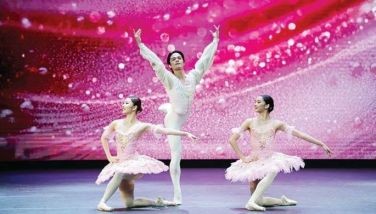The Higantes of Angono, the Higantes of today
November 23, 2006 | 12:00am
 Filipinos have indeed innate artistic and humorous way of self-expression. The Higantes that are roaming the streets of Angono today demonstrate this Filipino artistry.
Filipinos have indeed innate artistic and humorous way of self-expression. The Higantes that are roaming the streets of Angono today demonstrate this Filipino artistry.
In Angono, the feast of San Clemente, the patron saint of fishermen, is being celebrated today. In a procession during this festivity, the image of San Clemente is carried around the town to the Laguna lake and back to the church. The image is accompanied by his traditional escorts, the "parehadoras" — little children of every barangay wearing colorful costumes bearing boat paddles and "bakya" — and the Higantes.
Tracing back the roots of this fiesta, we will learn that the Higantes are not directly related to San Clemente. They have never been part of San Clemente’s life. Instead the townsfolk just integrated this gigantic human paper-mache in the celebration.
During the time of Spanish hacienderos in Angono, only one fiesta was allowed to be celebrated by the townspeople. To make the best out of the situation and have definite fun and spectacle, the townspeople created gigantic caricatures of their Spanish landlords using an art form brought from Mexico by Spanish priests. They featured the "Mag-anak" composed of caricatures of the father, the mother and the son.
This Higantes-making custom evolved in time and in 1897, the Higantes Festival was conceived by Mr. Perdigon Bocalan. Since then, the "Mag-anak", became three Higantes of the 13 barangays of Angono representing their different industries. These resulted to 69 gigantic human paper mache escorting San Clemente during his feast day celebration.
But the Filipino creativity is not only for festivities. In Manila, Higantes do not join fiestas but street rallies. Instead of the usual jolly Higantes of Angono, those in Manila depict protests. Activists are so creative that they are able to use art form for their protests. Instead of caricatures of Angono Spanish landlords, Manila has caricatures of government officials and other images picturing national issues and problems.
Filipinos are indeed artistic. From festivities to protest rallies, from playfully joyful recreation to seriously crucial endeavor the Filipino creativity is always at its best.
But why use the image of Higantes or giants?
The Higantes of Angono could really depict the Spaniards who were so powerful during their time in the Philippines. And the townspeople having no venue to express their feelings for or against their landlords used art for this purposes. Maybe it was an expression of hope that someday, although their Spanish landlords are "giants" in terms of power, they would beat them, like David in the story of David and Goliath. Which truly, the Filipinos are able to achieve, attaining liberty, winning different political battles and social wars.
When talking about giants, let it not be an image of being daunted and repressed. As we are creative, let us also be optimistic instead, knowing that the giants in us can be awakened to conquer all odds and come out triumphant.
BrandSpace Articles
<
>
- Latest
- Trending
Trending
Latest
Trending
Latest

By GO NEGOSYO PILIPINAS ANGAT LAHAT! | By Joey Concepcion | 1 day ago

By BABE’S EYE VIEW FROM WASHINGTON D.C. | By Ambassador B. Romualdez | 2 days ago
Recommended























